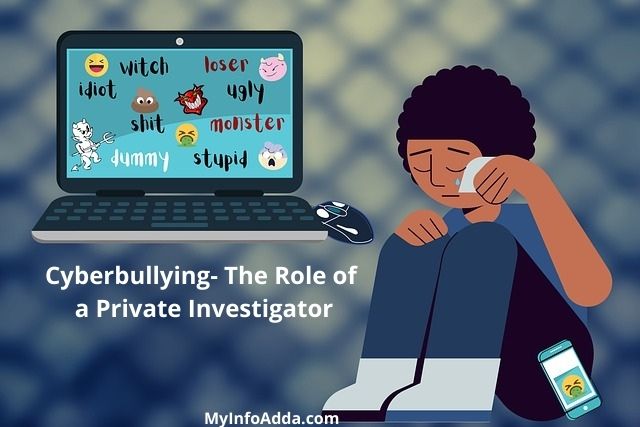When we speak to “school cyberbullying” or “cyberbullying,” we are referring to a type of virtual bullying in which only teens are involved, and the victim and offender are both teenagers.
“Cyberbullying” is the use by teenagers of digital media such as WhatsApp, social networks, and email to repeatedly inflict intentional harm on other teenagers.
With this kind of computer crime, teenagers suffer a decrease in self-esteem and dignity, undermine their “social status”, causing significant psychological damage, stress, and a sense of social rejection.
Cyberbullying involves a series of wounds that affect least the psychological, social, and educational levels.
A few years ago, before the rise of digital media and social networks, when teenagers were bullied, it was in the academic environment of an educational institution. The bully was usually from the same school, and after the school day ended, the adolescent might be “free” from bullying for several hours because there was another social arena outside of school.
Today, social networks and instant messaging applications such as WhatsApp allow victims of possible harassment by teenagers to be called “24/7 harassment”, and victims are exposed to stalking 24 hours a day, 365 days a year.
The harassment of teenagers is intentional, not accidental, and should cause clear harm to the target or victim.
Bullying is a recurring occurrence, not a reaction to isolated incidents, which is a key aspect of cyberbullying.
It is also worth noting that, because of the environment in which harassment occurs, one action of the perpetrator may mean a long-term victim experience for the victim.
Methods of “cyberbullying” by teenagers
Modern children are digital natives and adapt to new technology changes and updates with no problems. They use new technologies in different ways, trying to harm the victim. So, you can see different attacks.
– Direct attack.
The most common form of cyberbullying is the use of social networks, WhatsApp, e-mail, etc., to directly insult or intimidate the victim. They also steal passwords from the victim’s social and online game profiles and send viruses to manipulate the victim’s computer.
– Public attack.
Harassment perpetrators post humiliating rumors, offensive messages, photos, videos, etc. of victims through social media. Publish this information on your profile, pages, and groups in social networks, WhatsApp groups of classmates and schools, etc. The purpose of these publications is usually to slander the teenagers involved.
– Attacks by third parties.
Phishing and creating fake profiles on various social networks and online games are tools that the harasser uses to send threatening or provocative messages, exposing the victim to the eyes of a third party.
Features of “cyberbullying”
While traditional bullying and “cyberbullying” have common features, “cyberbullying” can have a distinct aggression among teens due to its nature.
– Invisibility and anonymity on the web. Bullies can readily conceal their identities by the use of digital media. You can also create a fake profile so that the victim does not know who the stalker is. This anonymity, which the harasser thinks he has, strengthens his sense of power and control over the victim. The inability to know the true identity of the harasser exacerbates the problem and causes the victim to feel uncomfortable and suspicious about all of his social and affectionate environment.
– 24 hours, 365 days “exhibition. Victims are exposed to the Internet 1 day 24 hours 7 days a week. This situation allows the perpetrator of harassment to access the victim from anywhere and creating a real violation of the victim’s daily life. As mentioned earlier, in conventional bullying, the victim could sever the relationship with the bully at the end of education, but this kind of bullying constantly exposed the victim to the bully.
– Virality and greater audience reach. This is one of the key points of this new form of damage. Think to the new technology, content published by bullies to damage the reputation and dignity of teenagers has great “virality”, reaching a large audience in a short time. Once the content is published and shared on social networks, it becomes out of control and the victim can’t really know how far these publications have gone and who has seen or read them.
What is the job of a private detective in cyberbullying?
You may not be aware that your son is being victimized by “Cyberbullying” in the school environment, but you can sense certain symptoms and situations that you should be wary of.
– Changes in physical condition and emotions
– Behavioral changes
– Changes in the learning environment.
– Decline in academic performance
By asking a private detective specializing in “cyberbullying”, it is possible to find out whether the change in a child’s behavior is due to “cyberbullying” or ” bullying”, at least by excluding such situations and looking for other causes.
Private detectives investigate the environment closest to the victim to look for information supporting whether a teenager has been victimized by harassment and take urgent action.
In cyberbullying, it is essential to have an expert in a private detective office who can analyze and investigate social networks and digital evidence. As mentioned earlier, this kind of harassment is using new technology as a means of action and you may come across WhatsApp conversations and publications on social networks that need to be evaluated and prove their veracity in order to end harassment in which teenagers are victims.
You may also like:
Best WordPress Security Plugins to Protect Your Site
IARM: Cybersecurity Solutions







